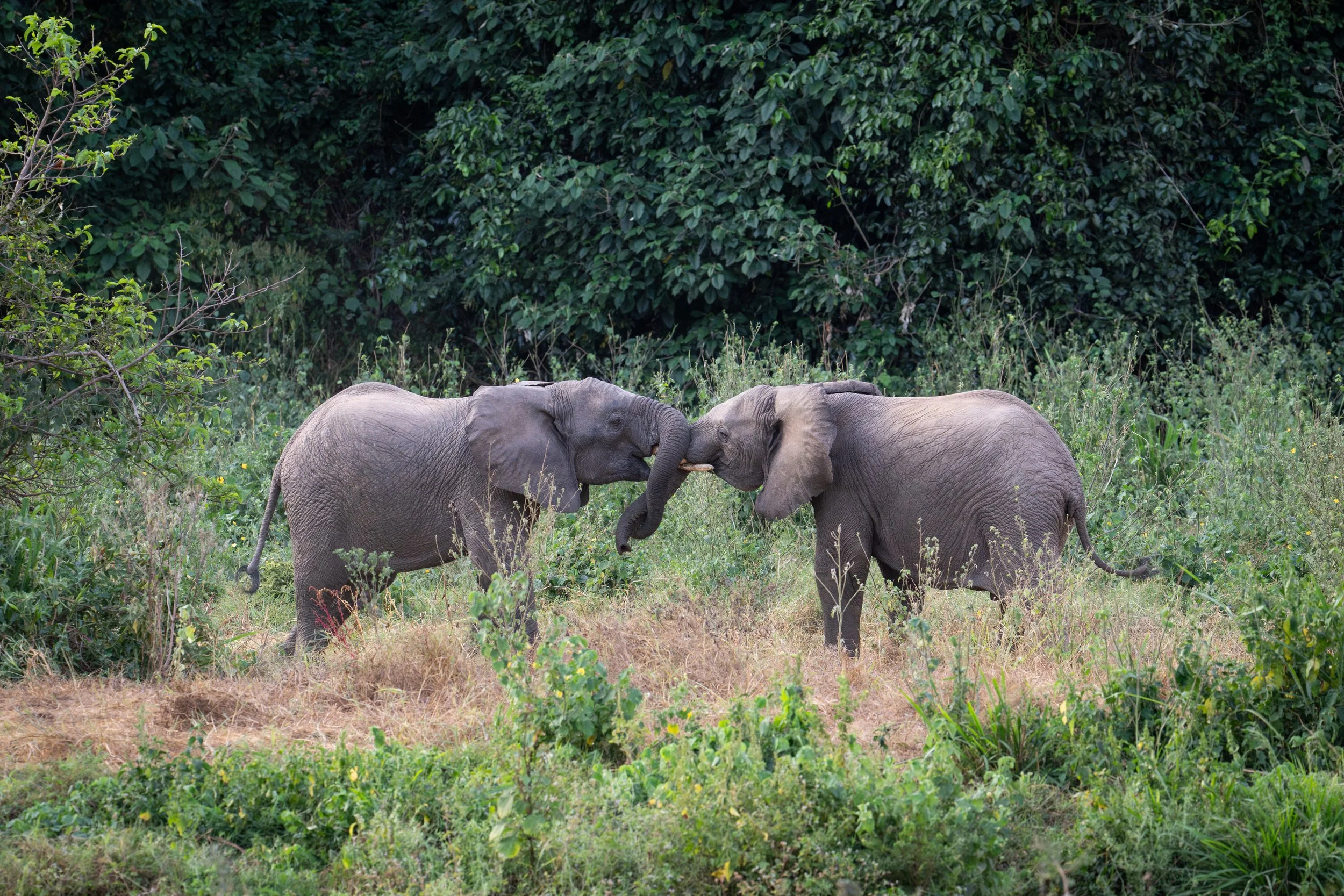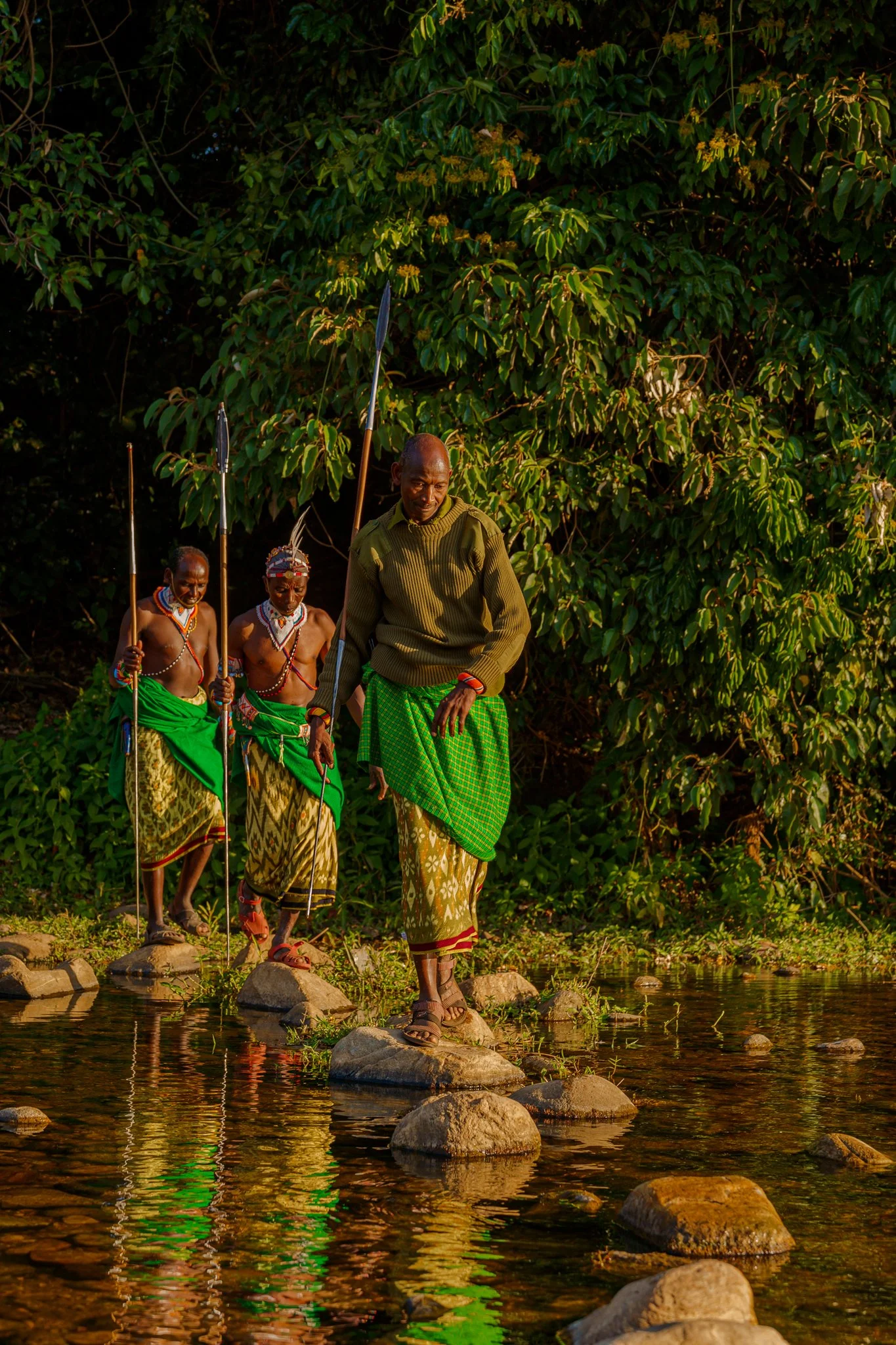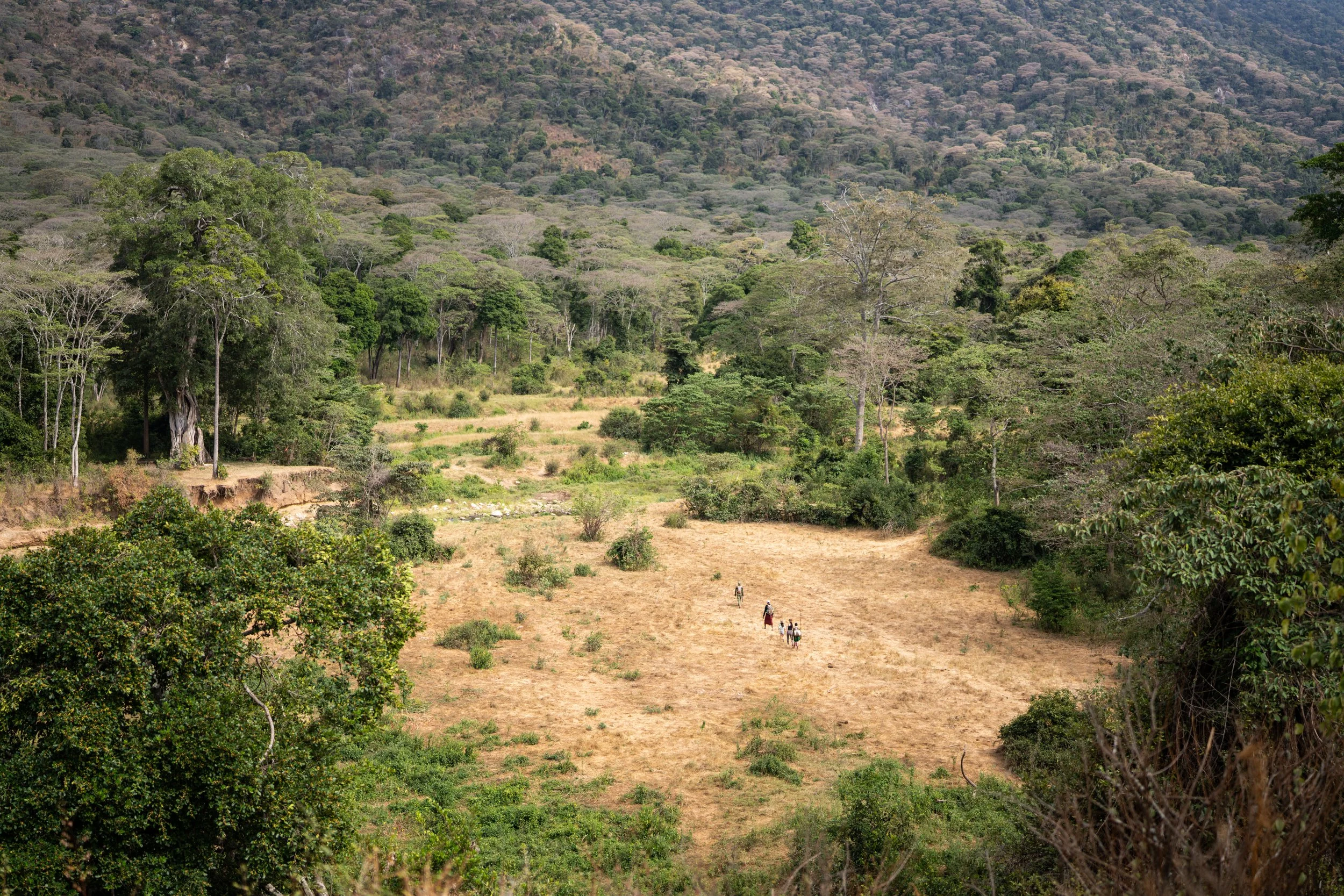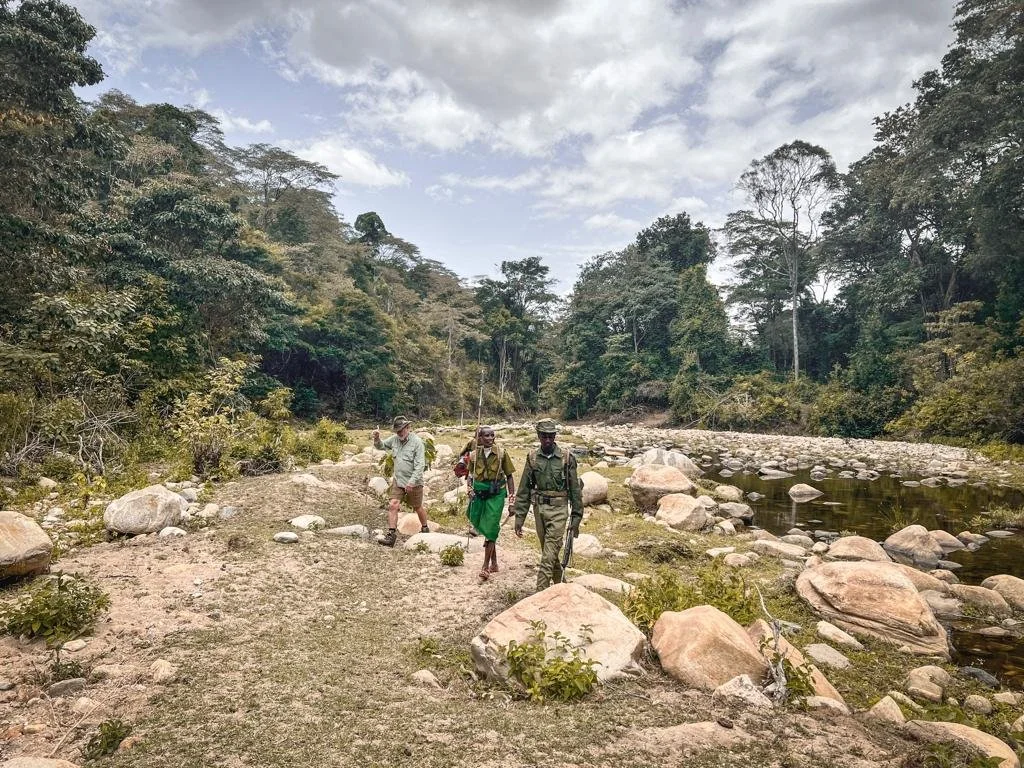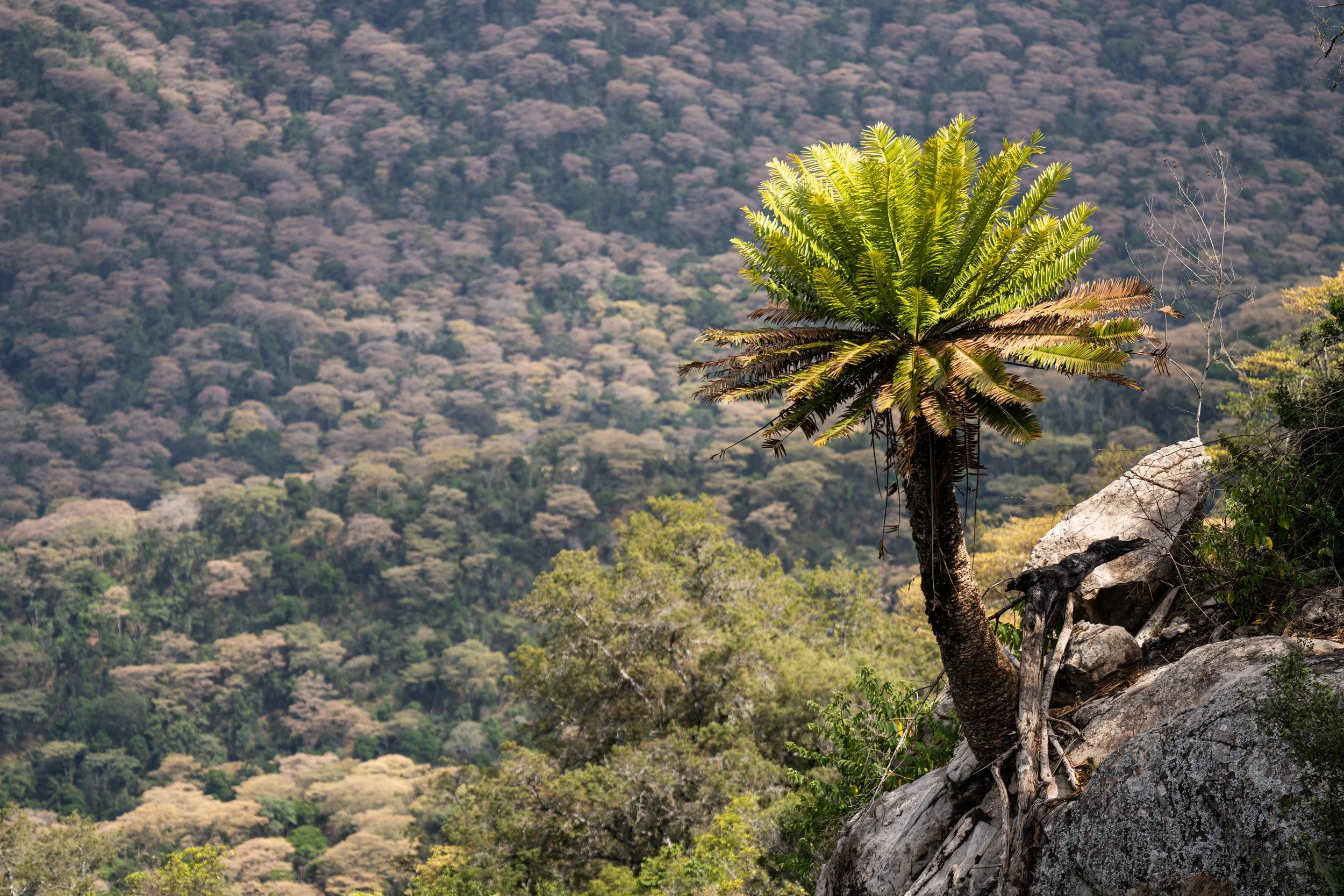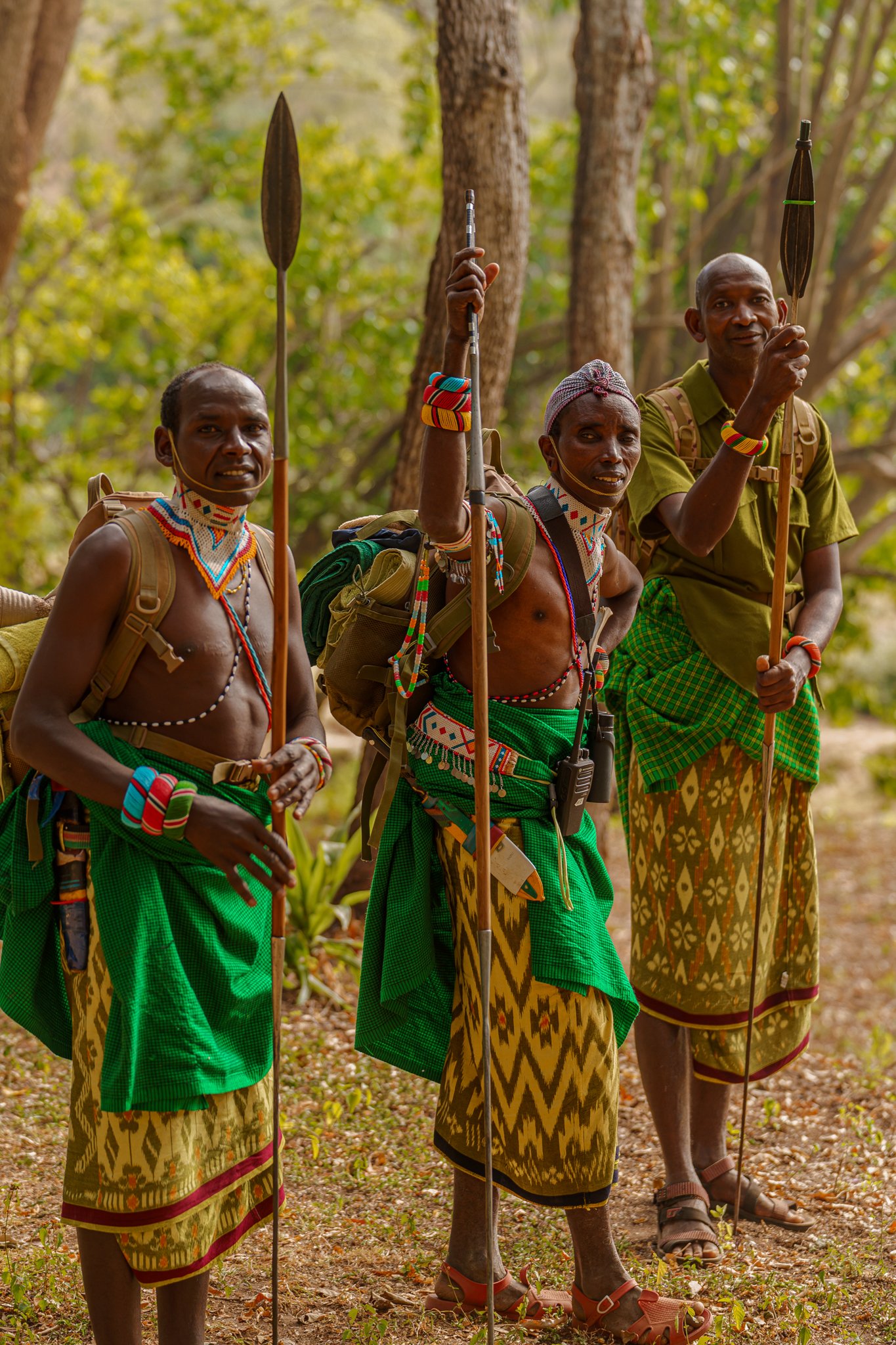If you want a traditional safari in the back of a 4x4, you won’t find it here.
If you’re looking for the chance to ditch the dulcet humming of an engine and walk through pristine ancient forest with a local tracker, treading in the footprints of a leopard to the sound of a hundred bird calls – you’ve come to the right place.
The forests around camp are home to over 350 bird species, more than 150 species of butterfly, a number of wild forest orchids, and a rare and endemic giant cycad – a plant that looks like it belongs in the age of the dinosaurs. They are also home to elephants, leopard, buffalo, wild dog, greater kudu, waterbuck, giant forest hog and the only population of De Brazza monkeys in Kenya.
HIKING
Walking, or the longer hikes, is the only way to truly experience this magical place, and we have experienced Samburu trackers on staff who have an incredible mental map of the forest paths, as well as an in-depth knowledge of the tracks, spoors and calls of local wildlife. All walks are accompanied by an armed ranger.
Exploring the forest is the ‘order of the day’ whilst staying at Kitich! This ranges from wild swimming in crystal clear rock pools, fly-fishing and forest picnics!
CULTURE
You can also visit the magical Singing Wells or the nearby Ngilai Village (be sure to ask the team when market day is!). Through respectful cultural exchanges, gain insights into traditional knowledge and sustainable living practices that have preserved this ecosystem.
FLY-CAMPING
Our longer hikes take you from the Samburu low-lands to the heights of the Mathews Mountains and forest. The camels, donkeys and your crew lead you through the most magical, pristine Samburu landscapes and biodiversity. The experience is exclusively yours.
FLY FISHING
Every pool in the river is packed with fish, with the larger specimens lurking in the cool water of deep pools in the dry season, and moving into shallow flats and riffles when the stream swells. An astute angler will watch the stream’s eddies carefully, waiting for the schools of small barbel to scatter in the presence of the larger fish, launching their hopper, with a long and delicate tippet towards their target. The larger barbel, weighing up to four pounds, reached their size for a reason. They will scrutinize your fly, circling it, before cautiously deciding whether to gently sip it off the surface.
In terms of equipment, fly fishing the Ngeng is similar to a small trout stream, with a short rod in 2 or 3 weight fitting the casting distances perfectly when paired with a floating line and a 9 foot 4-5x leader. It is recommended that anglers on the Ngeng fish barbless hooks, as it is common to have to go through several smaller fish before raising a trophy to their fly.
A large terrestrial, ideally a hopper or a dragonfly imitation, will suffice in most circumstances. While smaller dries work, as one will often observe the barbel rising aggressively at late afternoon mayfly hatches, they will struggle to garner the attention of larger fish in deeper pools. A missed fish can often be coaxed into a second strike by switching to a large nymph or small streamer and swinging it downstream. The Ngeng river is a must-visit location for the avid dry fly fisherman and those with a passion for native fisheries. And do not be fooled by the stream’s size, as the largest fish in the river are sure to put your gear to test.

